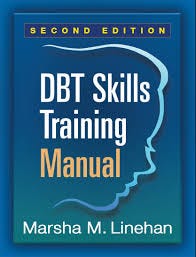As I write this post, we’ve officially arrived at the last day of the first month of 2025. That made me wonder if the resolution(s) you made for 2025 are still intact. If they’re not, that’s okay. Very few of anyone’s best intentions make it (including mine).
Research shows that 80% of people abandon their New Year's resolutions before the end of January. (Schweitzer, W. Journal of Behavioral Development, 19(3),123-131)
So, hardly anyone’s resolutions will get through January, let alone the entirety of 2025. if your resolutions fell along the wayside, you’re not alone.
And if you feel guilty, or ashamed, or in some way disappointed in your inability to follow through, you can give yourself a break. Especially people living with mental health conditions characterized by emotional dysregulation such as Borderline Personality Disorder, Anxiety, Depression, Bipolar Disorder, ADHD and others.
And I suspect this has been the case for a long, long time.
When Did New Year Resolutions Become A Thing?
A long time ago.
Some 4,000 years ago - the people of Babylon introduced the notion of New Year’s resolutions.
The Babylonians would make promises to their gods that they would repay any debts they had incurred and to return any items they had borrowed in the previous year. The common belief was that if they settled those obligations, the gods would look favorably upon them in the coming year.
However, the Babylonian version of a calendar year consisted of 10 months. There was no January or February. Their calendar began in March to align with the warming weather for sowing their crops. Needless to say, the Babylonian calendar was accuracy challenged.
From Whence January?
In 713 BC the second king of Rome, Numa Pompilius, decided that two additional months- January and February- would resolve the accuracy issue of the calendar. He named the first month of the year January, in honor of the Roman god Janus.
The name Janus comes from the Latin word for door - Ianua. Appropriately, Janus’s primary role was to be the doorkeeper of the heavens. Statues, coins and other images of Janus depict him with two heads, one looking ahead and the other behind, promoting the belief that all forms of transitions– beginnings and endings, entrances and exits, doors and other passage ways - fell under his domain. Ipso facto, the first month of the new calendar was dedicated to Janus.
Like the Babylonians, and other cultures of antiquity, Romans also made sacred vows each new year to improve themselves in some way and to curry favor with their gods.
Are Resolutions A Good Thing?
In our modern world, making New Year’s resolutions is still a common, but overall not very successful endeavor. In fact, a number of mental health experts believe that making such resolutions can create more distress than feelings of well being.
In 2009, Paul Farmer, chief executive of the U.K mental health charity Mind, wrote:
Resolutions which focus on issues such as the need to lose weight or job worries create a negative self-image. And if the plans fail to materialize, that could trigger feelings of failure and inadequacy. Focusing on problems or insecurities can lead to feelings of hopelessness, low self-esteem, and even mild depression. We chastise ourselves for our perceived shortcomings and set unrealistic goals to change our behavior, so it’s not surprising that when we fail to keep resolutions, we end up feeling worse than when we started.’” (Waxler, 2009)
In other words, aiming for dramatic change in a short period can lead to disappointment and frustration when your goals are not met. This can generate a cycle of failure that can negatively impact self-esteem and motivation.
So, while the intent of making resolutions is admirable, committing to make significant changes in your life with a random, not well thought out plan, can quickly undercut enthusiasm and generate feelings of inadequacy.
A More Skillful Way
Dialectical Behavior Therapy, or DBT, the first and most successful treatment for Borderline Personality Disorder, has also been shown to be highly effective in making significant and lasting personal changes in general .
DBT is considered the "gold standard" of treatment for Borderline Personality Disorder (BPD). Marsha Linehan’s DBT was designed to alleviate the emotional pain people with Borderline Personality Disorder (BPD) endure every day.
Linehan described people with BPD as being highly sensitive but living in an environment not suitable to their unique needs. To help people navigate those environments and the problems they present, DBT provides a set social skills to help tamp down highly emotional reactions to adverse experiences at home, in school, at work, etc.; responses that typically turn out to be inappropriate and ineffective.
Skills For Life
One foundational principle of DBT is that a person with BPD accept the circumstances of their life while also committing to make necessary changes in their behaviors. Making those changes can be difficult to accomplish
To help people living with BPD change the way they think and behave - as well as improve the negative attitudes they hold about themselves, Dr. Linehan designed a set of social skills to help people achieve what she describes as a life worth living.
P.L.E.A.S.E. Help
One of the skill sets Dr. Linehan developed is known by the acronym - P.L.E.A.S.E - with each letter describing an activity to helps reduce out of control emotional reactions triggered by negative life events, particularly in interpersonal encounters.
Here’s a sample page from the DBT Skills workbook that show what each letter in P.L.E.A.S.E. stands for and how implementing these ideas can help improve things:
PLEASE is only one of several DBT skills for managing negative emotions and behaviors.
Finding DBT
Since Dr. Linehan’s book Cognitive-Behavioral Treatment of Borderline Personality Disorder was published in 1993, it has been widely disseminated in the US and around the world. But not yet enough to meet the needs of most people with BPD.
How many people is that?
It is currently estimated that 2% of the general population will meet criteria for BPD at some point in their lifetime. That translates to a staggering 158 million people who potentially might benefit from Dr. Linehan’s work.
In addition, it is also well established that family members of people who have BPD are themselves deeply affected by the emotional chaos that BPD generates. That might add another 2 to 3 million people who could benefit from learning DBT.
Financing DBT
Funding for mental health care is different in virtually every country in the world. For example, in the U.S. mental health treatment for BPD is expensive, even if you have insurance that covers mental health. In general, US based insurance companies only reimburse a portion of the actual cost and for a limited number of therapy sessions. As one mother of a person diagnosed with BPD said, it cost the equivalent of a second mortgage on their to pay for her treatment.
In the U.K. the National Health Service (NHS) provides, and funds through taxes, treatment for people with health and mental health conditions, including BPD. However the number of people seeking DBT treatment far exceeds the availability of DBT providers. People within the NHS may wait for months or longer for an appointment.
In other parts of the world a range of different models, from fully funded plans to combinations of other models, to consumer out-of-pocket payments are the norms.
The bottom line is that the cost of accessing reliable DBT treatment can be a significant financial burden for most people.
There are, however, less costly ways to learn DBT on your own.
Accessing DBT
There are a great number of affordable books about DBT and the social skills and techniques developed by Marsha Linehan. One of the most user-friendly books on the subject is DBT For Dummies, co-authored by Gillian Galen, PhD, and Blaise Aguirre, MD. Both are affiliated with the McLean Hospital, a leading BPD treatment and research facility in Massachusetts..
There are also excellent BPD advocacy organizations that provide free or low cost in person and online programs for people living with BPD and for family members of a person with BPD. There are three such organizations that we have years of familiarity with: The National Education Alliance for Borderline Personality Disorder (NEABPD), Emotions Matter, Inc. based in New York City, and the Sashbear Foundation in Ontario, Canada. There are other organizations that focus on BPD and DBT that you can also find via Google search.
In addition, there are a number of DBT professional and consumer educators who offer online DBT skills training programs with varying fee structures. You can Google them using the search term "online DBT skills". Be sure to read all of their information, search for reviews and determine what the fees are for these programs.
The Linehan Institute Board of Certification (https://dbt-lbc.org/) maintains a directory of DBT therapists who have been trained and certified that they practice DBT as Dr. Linehan envisioned.
Finally, you can find a good deal of detailed information about BPD and DBT educational resources on our website BPDVideo.com.
Importantly, you don’t have to be diagnosed with a mental health condition to benefit from DBT. The social skills in DBT are just that- techniques that are useful in any environment including home, work and school among others.
We sincerely hope that you are able to find a way to learn more about DBT and how to incorporate some of those helpful ideas into your life.
Wishing you well!
Kevin@BPDVideo.com








